Table of contents
An unexpected encounter with mouflons
It was an absolute coincidence. Actually, we wanted to go hiking in the north of Tenerife that day. But it was raining heavily and looked very dark towards the north. And so we decided to stay in the southwest and walk a little round high above Arguayo towards the Teide National Park. And although the weather was mixed with a little rain, clouds and also sun, we walked towards Teide. Suddenly and completely unexpectedly, a group of 8 mouflons stood in front of us. At first I couldn’t believe it, as I had never seen these shy animals over so many years on Tenerife with endless hikes. At first I thought that maybe they were wild goats after all.
Mufflonherde auf der FluchtBut on closer inspection I realised from the colour and the curved horns of the male animals that they were indeed mouflons. A beautiful moment. And the animals were not far from us. Strangely, they did not run away immediately. They looked at us and we looked at them. On both sides, incredulous amazement. Hadn’t they heard us or smelled us? Normally, mouflons are considered very shy and can see people up to a kilometre away. But suddenly the mouflons started to run away. They did this exactly the way mouflons run in escape mode, namely in a long line one behind the other. That looked beautiful too. I stood there in disbelief for some time, enjoying this unusual encounter.
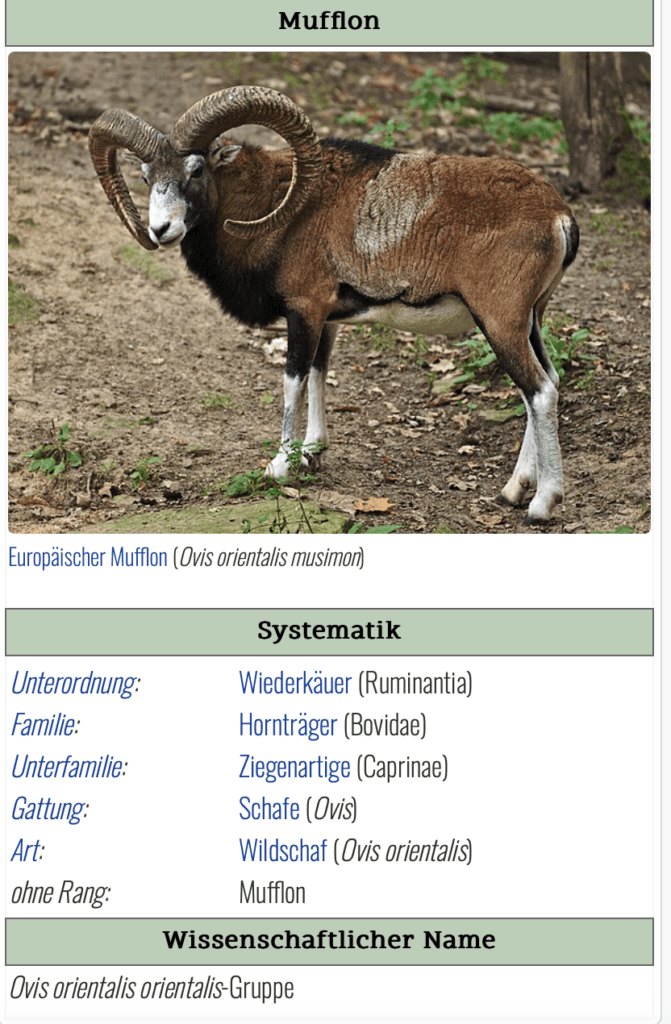
Mouflon ram - Picture:
https://www.biologie-seite.de
Research on the mouflon
I took this impressive encounter as an opportunity to do a little research on mouflons in general and on Tenerife in particular. I read on the website of the National Park Authority and in the newspapers Eldía and Diario de Avisos. And I also found what I was looking for on YouTube. After I was done with the research, I was also done. Because I found out why I had never seen mouflons on Tenerife. Last year, according to the National Park Authority, there were only 70-125 left on the island and they continue to be hunted mercilessly for 4 months of the year.
So it really was a miracle that we were lucky enough to see these animals at least once. I read about mouflons and especially about the history of the mouflon on Tenerife. And I also found “unfortunately” many films on YouTube about mouflon hunters and their hunting of mouflons. One of these hunters even proudly posted a picture with a dead mouflon on social media (report from EL DíA), which fortunately did not only bring him the desired applause. I don’t want to go into the videos and the many stories about the dangerous mouflon here. Just take a look at the topic for yourself on YouTube.
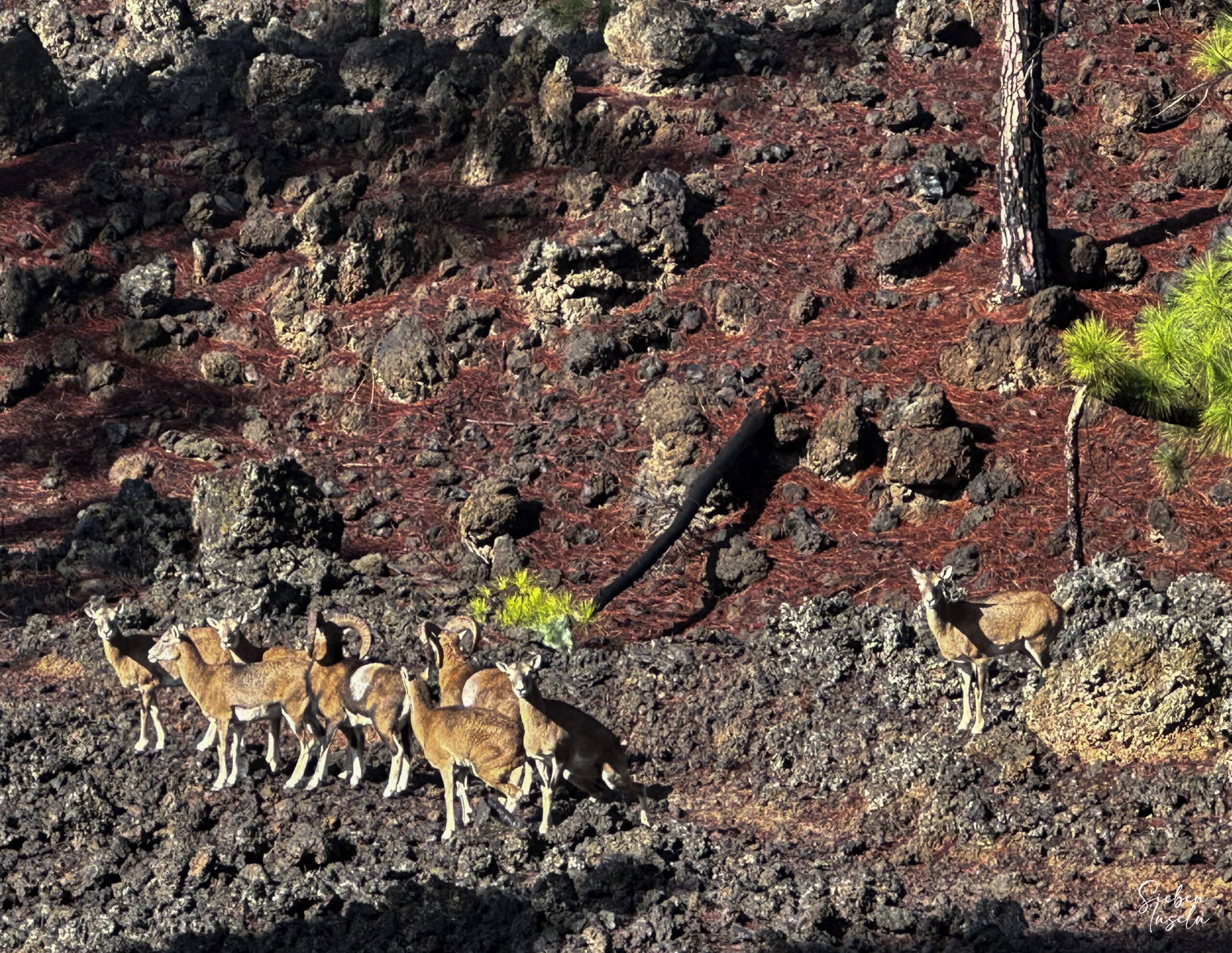
Mouflons up close
Where do mouflons come from and where are they found today?
In general, several subspecies of wild sheep are grouped together as mouflon (Ovis orientalis). In a narrower sense, this refers to the subspecies of the European mouflon. Mouflons are about 130 centimetres long and have a body height of 90 centimetres. Rams usually weigh around 50 kilograms and sheep 35 kilograms. The rams have distinctive curved horns bent backwards. The females and lambs form flocks, while the rams only join the flocks during the mating season. As the mating season is between September and November, I was lucky enough to see the herd together and thus also with bucks.
Today, the mouflon is still found in the Caucasus, Anatolia, northern Iraq and north-western Iran. Since the 16th century, the mouflon has been released as game in many parts of Europe. The European mouflon (Ovid Orientalin musimon) reached Corsica and Sardinia and thus Europe in the 5th millennium BC. This is also the species of mouflon that can still be found here on Tenerife at the moment.
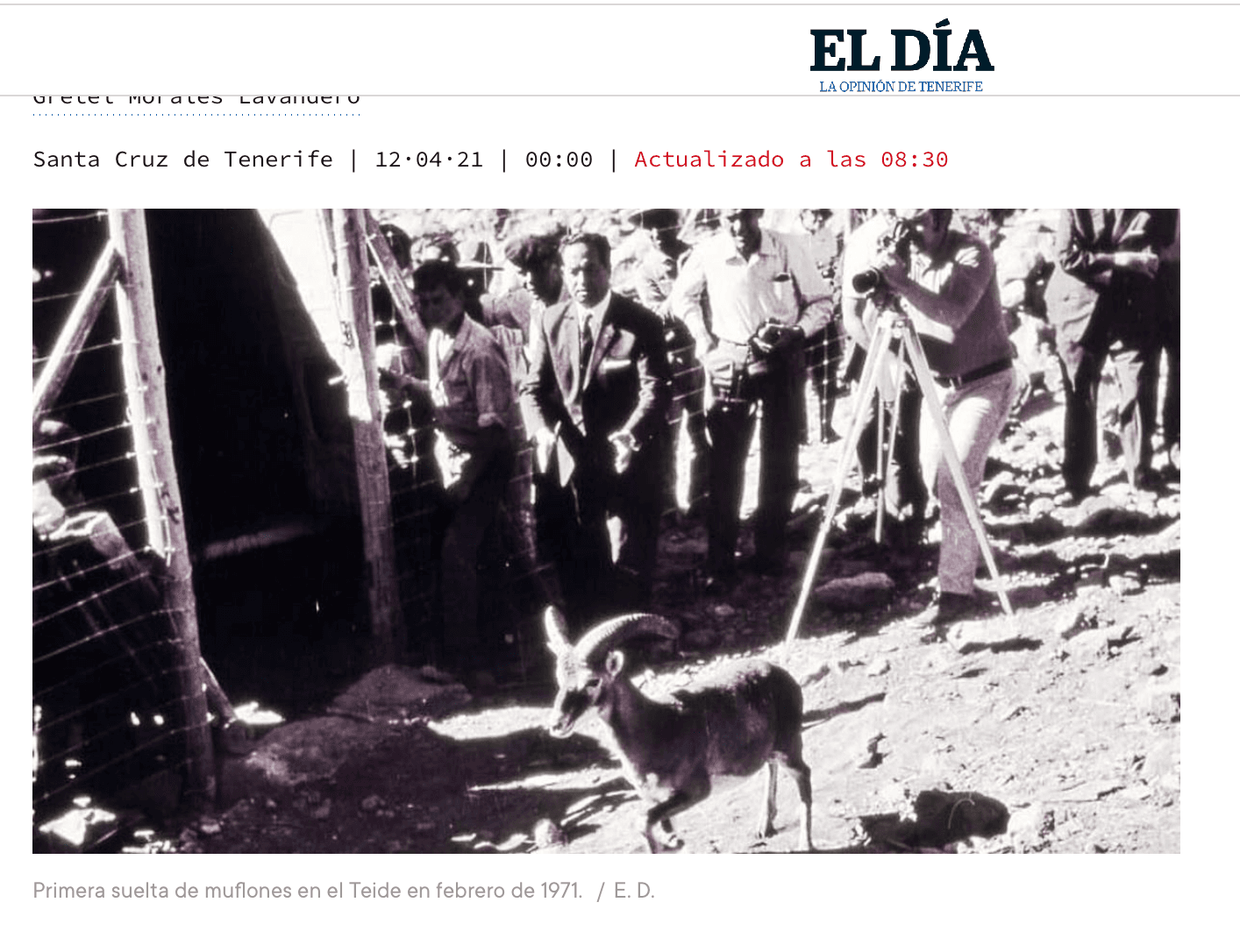
In February 1971 the 1st mouflon was released in the Cañadas - Photo EL DÌA
The history of the mouflon in Tenerife
At the end of the 1960s, the Tenerife Hunting Association wanted to “add some decorative elements from the animal kingdom and big game species to the island’s landscape”. The aim was to “bring animals to Tenerife that would beautify the mountains”, all with the agreement of politicians and hunters. And so, among other non-endemic animals, 11 mouflons, four males and seven females, arrived in Tenerife on a German plane in 1971 and were released into the wild in the cañadas.
At that time, there was no concern about the possible consequences for the animals and the flora of Tenerife. The mouflon were jokingly called “Franco’s sheep” during Franco’s time. Over the years, it was gradually recognised that the mouflon is a herbivore that feeds on herbaceous plants. Among other things, mouflons eat plants such as the endemic Teide broom and the silver thistle. Over the years, there have been numerous studies and investigations on the feeding behaviour of mouflons. Of course, they all turned out differently.
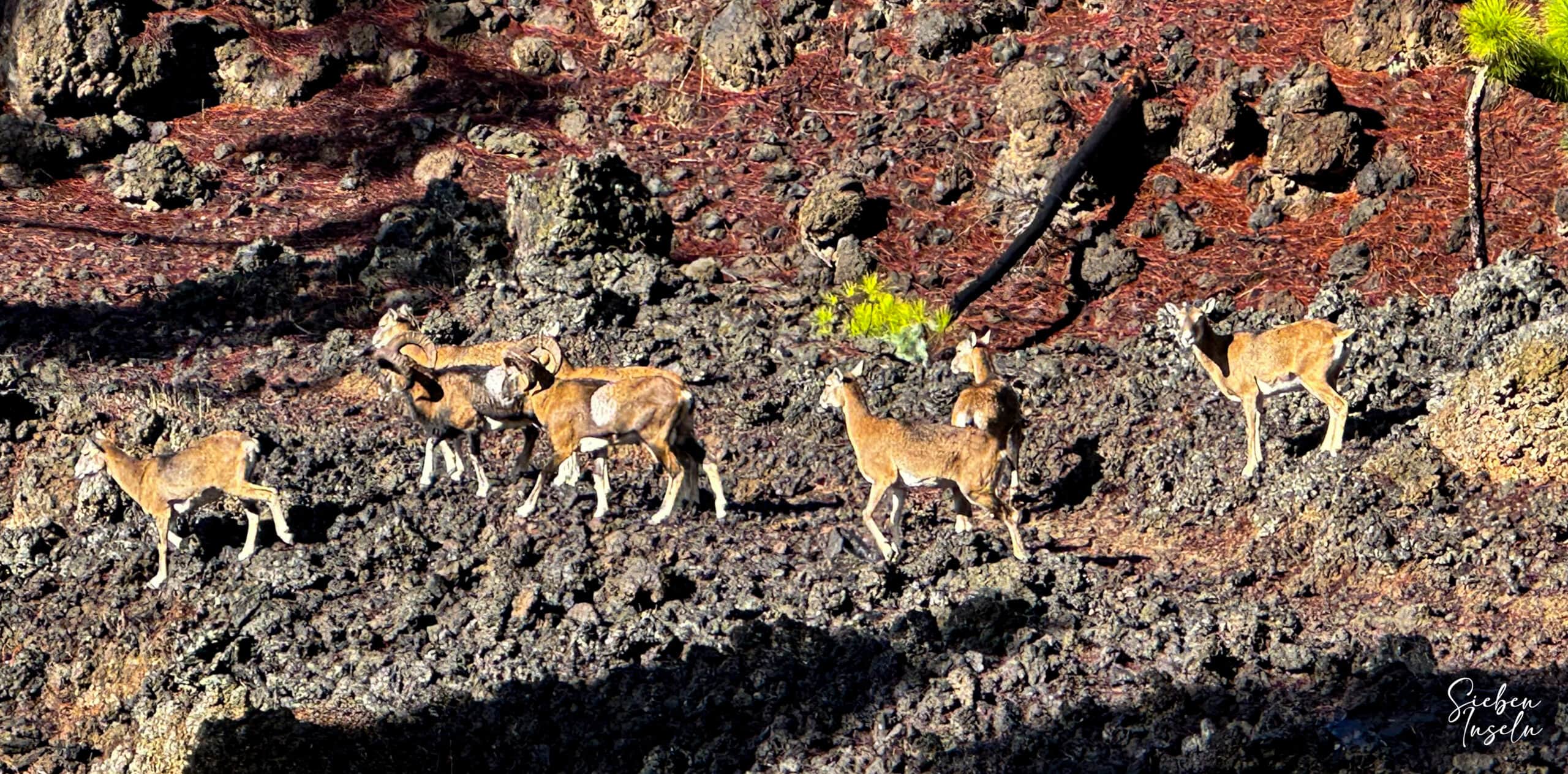
Article summary and large selection of GPS hiking tracks
Sign up for my newsletter now and get exclusive access to my collected GPS tracks as well as all the brief information about my articles.
Sign up now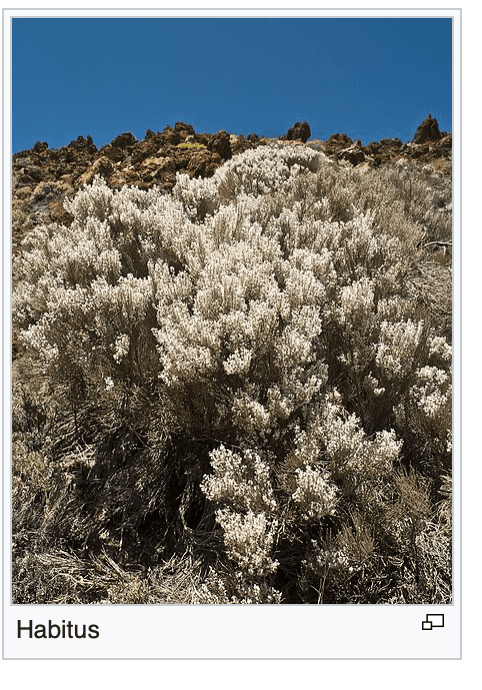
the endemic Teide broom, which mouflons like to eat - photo Wikipedia
An expert report stated that a total of 22 endemic plant species had been identified in the cut open stomachs of the animals. There was also increasing concern about the distribution of the population, which peaked in the 1990s with almost 600 mouflon. Some associations demanded and still demand the immediate absolute eradication of the mouflon. The hunters, on the other hand, would rather continue to control the population, according to Antonio Porras of the hunting association of the island of Tenerife. Control combined with continued hunting pleasure.
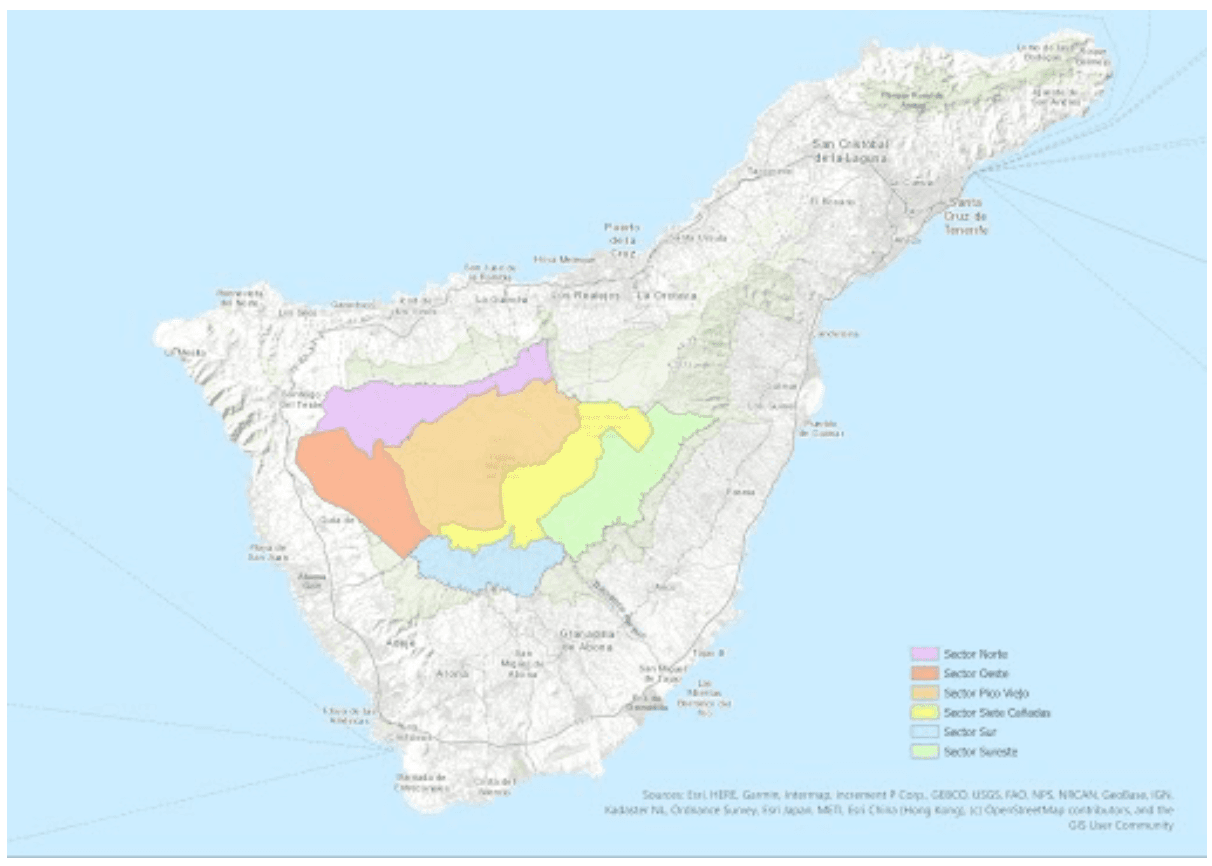
Area where the last mouflons are hunted
Hunting the mouflon
Mouflon hunting has been allowed on Tenerife since 1977 and there are currently two hunting seasons, one in spring and one in autumn. About 1,000 hunters, says Porras, go hunting in 47 hunting groups of 20 to 25 people each. Every year they kill about a hundred specimens. During this time, the hiking trails are closed. I had already reported on this several times on SiebenInseln. Mouflons and rabbits, which incidentally do not despise endemic plants, have been hunted with dogs and guns since 1977. Besides legal hunting, there are also reports of hunters hunting mouflon without a permit. So it really is a miracle that there are still mouflons on Tenerife at all.
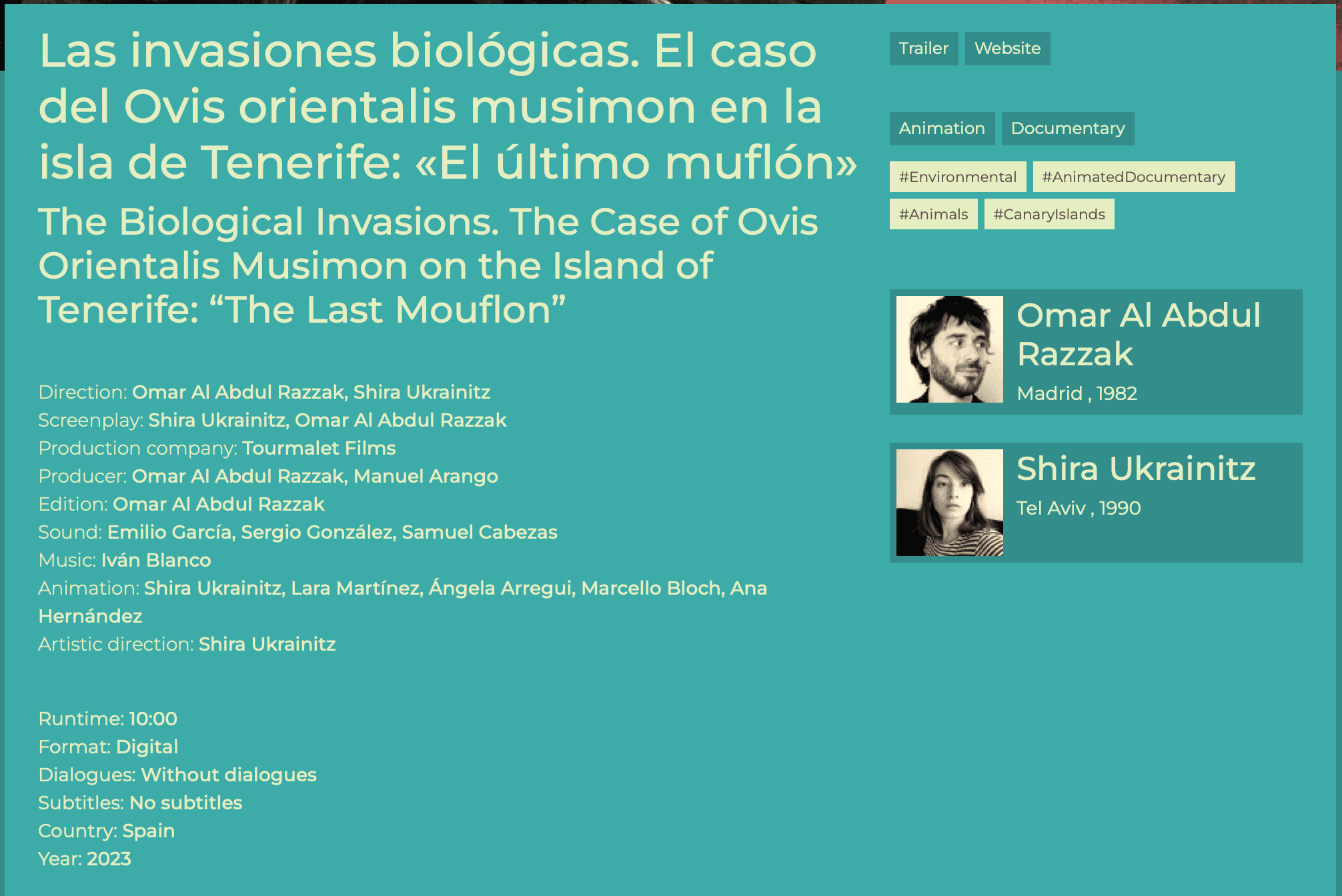
Poster for the Canary Islands film - the last mouflon
On Tenerife, these few specimens live in the Teide National Park and in the La Corona Forestal Nature Park, on the peaks of the northern line from 1,800 to 2,300 metres and on the peaks in the south, where mouflons are more often found at 1,400 to 3,100 metres. The mouflon prefers habitats with lava of a rough nature. The mouflon has no natural enemies on Tenerife. Only man, who brought it here and hunted it and now wants to exterminate it.
And finally – the last mouflon?
However, there are still a few voices that want to preserve the mouflon. For example, Iris Sánchez, a committed animal rights activist and coordinator of the PACMA (Partido Animalista Contra el Maltrato Animal), who also fights against dog suffering on the island, is against the extermination of the mouflon. But what will happen next? I hope that the mouflon will not end up like in this little Canarian YouTube film from 2023 – the last mouflon.
Thank you for reading!
If you've found my hiking guides on SiebenInseln helpful for your Canary Islands adventures, please consider leaving a small tip. Your support is greatly appreciated and helps cover the costs of maintaining this blog.
Thank you for your support!
SSL secured
Comments
There are no comments for this post yet.
Post the first comment
